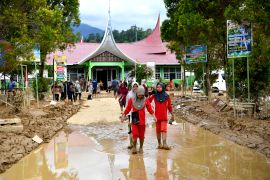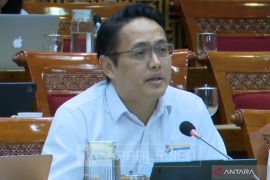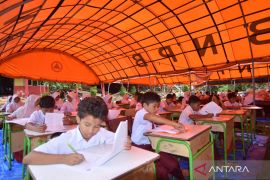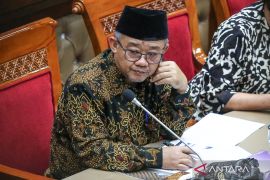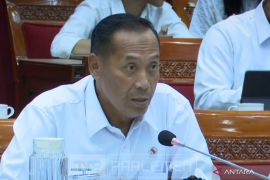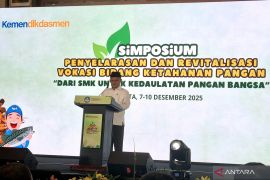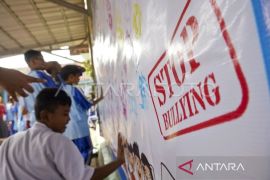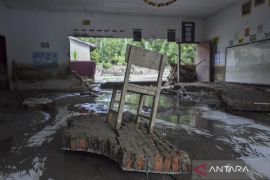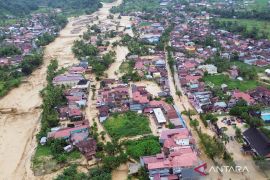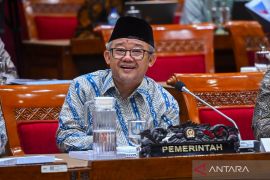Each student also has unique potential and abilities, so teachers need to be thoughtful in identifying and understanding their development, learning needs, readiness, interests, and potential.
In the efforts to understand their students, teachers are challenged to provide a variety of teaching materials and processes to make passive students more active and creative.
The goal is that learning in school situations should be fun, and if so, students would yearn to return to school.
The teaching and learning processes should not be simply copying material written on the board, one-way communication, dictating for students, or delivering theories, but it should be more creative, bringing life into the experience by trying lots of fun practices.
The teaching process must build the students' enthusiasm in developing critical and innovative thinking as well as be oriented towards them and their self-development.
In supporting teachers to hone their skills and increase their capacities, the Education, Culture, Research, and Technology Ministry has implemented the Teacher as Driving Forces Program to accommodate teachers in applying holistic education.
One of the teachers at the Diaspora Christian Education Foundation (YPK) High School in Kotaraja, Jayapura, Papua Province, Trias Agata Roni, realized that one of the obstacles in the English class she taught was that it felt boring, lacked life, or was monotonous.
Before being part of the Teachers as Driving Forces Program, Roni saw herself as a fierce teacher. While teaching, she felt that students were disinterested or not enthusiastic about the lesson, and instead, tended to be passive.
Roni, who teaches in grades 11 and 12, also admitted that the class was not lively, with the students finding it boring to actively ask questions or share their thoughts, and tended to be lazy to learn.
During a process of self-reflection, Roni got up and began to think about the changes that must be made to improve the teaching and learning experience.
Having participated in the Teachers as Driving Forces Program for nine months, she had learned a lot from independent projects, training, and fellow participating teachers.
Roni spoke of having attended training, workshops, conferences, and mentoring. In addition to developing self-competence, she acquired an independent learning experience and a guided, structured, and fun group.
Teachers as Driving Forces Program aims to create educational leaders, who encourage students' growth and development that is holistic, active, and proactive.
It also builds educators to implement student-centric learning as well as to be the agents of transforming the educational ecosystem to realize the profile of students with Pancasila traits.
"Hopefully, after becoming a teacher (of this program), I can get tips, ways to make learning in the classroom interesting," Roni, who graduated from Cenderawasih University of Jayapura, said while meeting journalists and the ministry's team recently.
While participating in the program, she received adequate training that could bolster her teaching skills wherein she has a community to exchange information about ways of teaching that build the students' enthusiasm.
Ronim, who has taught at the school since 2015, strives to be a teacher, who can provide flexibility for students to develop their potential through interesting activities.
The lecturing method is not effective in garnering the students' interest, she claimed. She pointed out that the challenge is how to get their attention to engage in the learning process before giving the subject matter.
In practice, she would first make an attempt to know the students' feelings and not immediately start teaching the subject.
"How are you feeling?" is one of the questions that Roni feels should be posed to start a class that will catch the students' attention.
She also regularly prepares games before the class starts, wherein students are invited to speak in English in a playful manner that is simple but fun.
Without realizing it, students have actually engaged in the learning process while playing.
In addition to seeking information through the internet and working independently, good teaching practices and game ideas can be obtained from the community of teachers that participated in the Teachers as Driving Forces Program.
"I have sought inputs from the community about what if the students get bored and about (ideas for) breaking the ice. We give each other suggestions if we cannot get new and interesting things," she explained.
Roni also conducts differentiated instruction or learning that gives students the flexibility to enhance their potential based on their readiness, interests, and character.
She explained that differentiated learning not only focuses on projects but also pays attention to the processes and contents.
Roni cited as an example that the students' final projects need not be the same but could vary from one another.
Students, with a penchant for singing, can make a final project by writing English song lyrics and singing them in front of their classmates.
Other students can do their final project in the form of writing, dancing, handicrafts, or videos, and can even use social media platforms.
By paying attention to the learning style and character of each student, Roni admitted that they are more confident about conversing in English despite still making some mistakes.
Related news: Papua: UNICEF pushes local govt to improve school sanitation data
Related news: Revival of Indonesia's vocational school in multimedia, animation
Editor: Rahmad Nasution
Copyright © ANTARA 2022

